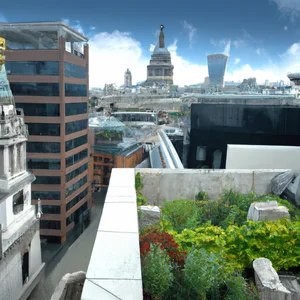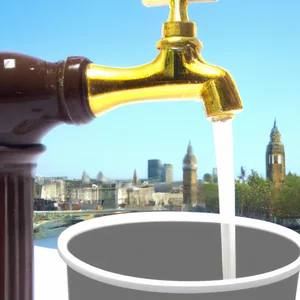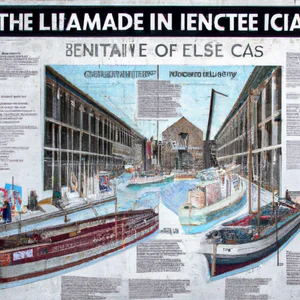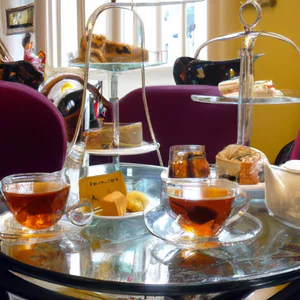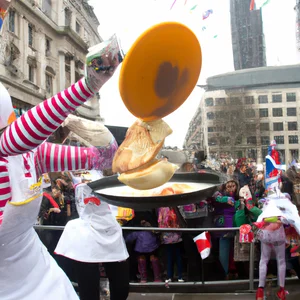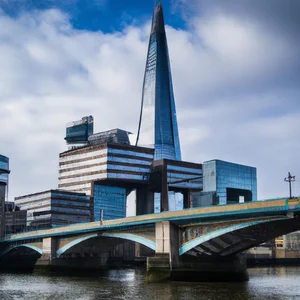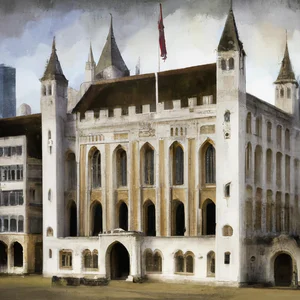Book your experience
London with children: 3 days
London with children: a dream weekend for the whole family!
So, if you’re thinking of taking your little ones to London, get ready for an adventure they won’t soon forget! It is a city that offers a lot of things to do and see, in short, there is something to have fun with. I’ll tell you a little about how you could structure your three-day trip, just to give you some ideas.
First day: A dive into the classics
Let’s start with a bang! As soon as you arrive, you might want to pop into Buckingham Palace. Children love seeing soldiers in uniform, they are like real fairytale characters! But, and here’s the best part, don’t forget to check the changing of the guard times, because it’s a show worth not missing. And while you’re there, maybe take a walk in St. James Gardens. The children can run around a bit and maybe spot some swans, which is always an eye-catcher, right?
After that, I recommend you go to the center and visit the British Museum. It’s gigantic, I know, but you can focus on certain sections. For example, the mummy room is always a surprise! If your kids are anything like mine, they’ll probably have fun trying to guess the mysteries of ancient Egypt.
Second day: Adventure and fun
On the second day, how about indulging in some action? Take them to Tower Bridge and maybe visit the Tower of London. Children love stories about treasures and ghosts, and they’ll find plenty of them here! I remember once, while I was there with my parents, one of my children started telling made-up stories about how kings and queens had lived there. It’s amazing how the story comes to life for them!
And then, you can’t miss a walk along the Thames, perhaps stopping to eat an ice cream. Ah, what a beauty! If the weather is on your side, you can also rent a boat and take a trip on the river, so the kids can feel like real sailors.
Third day: Creativity and relaxation
For the last day, I would say dedicate it to creativity. Why not take your little ones to the Natural History Museum? It’s a place that has that something extra, with dinosaurs that almost seem to come to life. My boys there started taking pictures as if they were real photographers, with ridiculous poses and everything!
If weather permits, you could also consider a picnic in Hyde Park. Maybe a nice blanket on the grass and some sandwiches, so you can relax a bit before heading home. And who knows, you might even see some street performers entertaining the crowds.
In conclusion, London with children is an experience not to be missed. Sure, there are a lot of things to organize, but the joy in their eyes when they discover something new is priceless. Plus, who doesn’t love a bit of adventure? In short, in the end, I think it’s a city that always manages to amaze, and your little ones will love it!
Discover London’s parks: nature in the city
An unforgettable anecdote
I still remember the first time I took my kids to Hyde Park. It was a sunny day, and as they ran freely along the paths, their laughter mixed with the chirping of the birds. They stopped to watch a family of ducks swimming in the Serpentine, their little faces lit up with wonder. That simple experience turned our visit into an unforgettable adventure, proving that London is not just a bustling metropolis, but also a haven of natural beauty.
Iconic parks and best practices
London is dotted with magnificent parks, each with its own uniqueness. Hyde Park, one of the largest and most famous, offers large green spaces and family activities, such as rowing boat rentals. Don’t forget to visit Kensington Gardens, where kids can explore the bee garden and meet the Peter Pan statue. For a quieter experience, Regent’s Park is perfect, with its rose gardens and play area.
For useful information and updates on the parks, consult the official Royal Parks website.
An insider tip
If you want to experience a magical moment, take your children to Hampstead Heath at sunset. Here, you can enjoy spectacular views of the London skyline, while your little ones explore the hills and woodland areas. This park is less crowded than the more well-known ones, offering you a more authentic and intimate experience with nature.
The cultural importance of parks
London’s parks are not just green spaces, but represent an important cultural heritage. Places like St. James’s Park have witnessed historic events and national celebrations. Their presence in the daily lives of Londoners highlights the importance of relaxation and connection with nature, even in such a dynamic city.
Sustainability and responsibility
Visiting parks is also a responsible choice: many of them promote sustainable practices, such as waste management and biodiversity conservation. Participating in cleanup events or simply respecting nature during your visit helps preserve these spaces for future generations.
An activity worth trying
While in Greenwich Park, don’t miss the opportunity to visit the Royal Observatory. Here, children can learn about time and stars in an interactive way. The view from the park is simply breathtaking and offers a great opportunity to take memorable photos.
Myths and misconceptions
A common misconception is that London’s parks are unsafe or neglected. In fact, most of them are well maintained and popular with families and tourists, making them ideal places for a walk or picnic. Safety is a priority and, with small precautions, you can enjoy every moment.
A final reflection
After spending three days in London with the children, ask yourself: what memories will you take with you and how has this trip enriched your family bond? London’s parks offer much more than just green spaces; they are an invitation to slow down and appreciate the beauty that surrounds us.
Interactive museums: educational fun for children
A journey into curiosity
I still remember the first time I took my nephew to the Science Museum in London. His eyes lit up with wonder as he explored the Wonderlab, an interactive area where science comes to life. Not only was he fascinated by the play of light and tactile experiences, but he was also learning without even realizing it. This is the power of London’s interactive museums: they turn learning into an unforgettable adventure.
Practical information
London offers a wide range of interactive museums, including the Natural History Museum and the V&A Museum of Childhood. Many of these museums are free, but it is always advisable to check their official pages for any special events or temporary exhibitions. For example, the Science Museum regularly has family-friendly events, such as live demonstrations and hands-on activities. You can keep an eye on the [Science Museum] website (https://www.sciencemuseum.org.uk/) for updates on programmes.
An insider tip
A little-known trick is to visit the Museum of London during less crowded hours, such as the first days of the week. This will allow you to enjoy the exhibits without the frenzy of crowds. Also, don’t forget to bring a notebook: many museums offer drawing and writing activities that can make the visit even more engaging for children.
The cultural impact
London’s interactive museums are not just places of learning, but also spaces that reflect British history and culture. The Science Museum, for example, not only exhibits inventions historical, but also explores the future of technology and sustainability, an increasingly relevant topic in today’s world. These museums offer visitors a window into human progress and stimulate the curiosity of young minds.
Sustainable tourism practices
Visiting museums like these is also a way to practice sustainable tourism. Many of them encourage the use of public transport and promote green initiatives, such as recycling and the use of sustainable materials in their displays. Choosing to explore the city through interactive museums instead of more impactful activities can contribute to a more responsible trip.
An experience worth trying
During your visit, don’t miss the opportunity to participate in a hands-on workshop, such as those offered at the Design Museum, where children can try their hand at design and construction activities. These moments not only stimulate creativity, but also provide a learning experience that goes beyond just information.
Myths to dispel
A common misconception is that museums are boring or only suitable for adults. In fact, many London museums are designed with children in mind, offering immersive experiences that capture the imagination of all ages. If you have children, don’t hesitate to bring them - you’ll find that fun can go hand in hand with education.
A personal reflection
The next time you are in London, ask yourself: how can I turn my visit into a learning opportunity? Interactive museums are not only a way to entertain the little ones, but also an invitation to discover the world together surrounds us. It’s not just fun; it’s a way to build unforgettable memories as a family.
Borough Market: authentic London tastes
An experience that awakens the senses
I vividly remember my first encounter with Borough Market. It was a cool October morning, and the air was filled with the aroma of freshly baked bread and exotic spices. As I walked among the colorful stalls, I felt transported to a world of flavors and culture. Every corner seemed to tell a story, and every taste was a journey into a London that goes beyond the usual clichés. Here, in the heart of Southwark, you can experience the authenticity of London cuisine.
Practical information
Borough Market is open every day, but Wednesdays and Thursdays are the best days to avoid the weekend crowds. Don’t forget to pick up the Borough Market Guide available at the market info point, to discover the best stands and specials of the day. Among my favorites are the artisanal cheeses and street food dishes, with options ranging from meat to vegan cuisine.
An insider tip
A little secret that few people know is that if you go to Borough Market mid-afternoon on a weekday, many vendors start offering discounts on fresh produce that can’t be carried over to the next day. A golden opportunity to savor delicacies at a reduced price!
A rich cultural heritage
Borough Market is one of London’s oldest food markets, dating back to the 13th century. It was a center of trade and commerce that influenced British food culture. Today, it not only offers food, but also represents a crossroads of cultures, where you can find ingredients and dishes from all over the world, reflecting the diversity of the capital.
Sustainability and responsibility
Many vendors at Borough Market are committed to sustainable practices, using local and seasonal ingredients and reducing environmental impact. Choosing fresh, zero-mile products not only supports the local economy, but also helps preserve the environment.
A lively and engaging atmosphere
Walking among the stalls, it is impossible not to be captured by the vibrant atmosphere. The laughter of children, the chatter of adults and the scent of freshly cooked dishes create a sound and olfactory mosaic that makes each visit unique. Don’t forget to stop and taste a portion of fish and chips or try a typical dessert like sticky toffee pudding.
An unmissable activity
For a truly immersive experience, take part in a cooking workshop at one of the many stands offering short courses. Learning to prepare typical London dishes with fresh, local ingredients will be an unforgettable memory to take home.
Myths to dispel
A common misconception is that Borough Market is for tourists only. In fact, it is also a place loved by Londoners, who go there to buy fresh ingredients and enjoy delicious meals.
Final reflection
The next time you are in London, I invite you to consider a visit to Borough Market not only as an opportunity to enjoy delicious food, but as a way to connect with the true essence of the city. Which typical dish would you like to try?
Sailing on the Thames: a unique view of the city
An unforgettable experience
I still remember the first time I sailed on the Thames: the sun was setting and the sky was tinged with shades of gold. As the boat glided gently on the waters, London revealed itself in all its splendor. Iconic landmarks such as Tower Bridge and the London Eye stood out against the sky, creating a panorama that looked like something out of a painting. This water journey is not just a way to get around the city, but an opportunity to see London from a completely new perspective.
Practical information
Today, there are several companies offering river tours on the Thames, such as Thames Clippers and City Cruises. Tickets can be purchased online or at the docks, and tours range from simple tours to more elaborate experiences with expert guides. It is advisable to book in advance during the high summer season, when tourists flock to the city. Don’t forget to check out family offers, which can make the experience more convenient for parents.
An insider tip
Here’s an unconventional tip: take an early ferry and head to Greenwich. Not only will you avoid the crowds, but you will also have the chance to enjoy spectacular views of the city as it wakes up. Additionally, many ferries offer discounts for children, making travel even more accessible.
The cultural significance of the Thames
The Thames is not just a river, but a symbol of London’s history and culture. It played a crucial role in the city’s trade, navigation and social life for centuries. Across its waters, London has seen its empire grow and transform into one of the world’s most influential metropolises. Today, river cruises allow visitors to immerse themselves in this living history, while admiring the architectural works that dot its banks.
Sustainability and responsible tourism
In an age where sustainable tourism is key, many cruise lines on the Thames are adopting eco-friendly practices. For example, some boats are powered by electricity, reducing environmental impact and helping to keep river waters clean. Choosing to sail on the Thames is therefore not only a way to explore the city, but also a responsible choice.
An activity worth trying
To make your experience even more memorable, I recommend taking a tour that includes lunch on board. While enjoying typical London dishes, you will have the chance to admire the iconic sights slowly passing before your eyes. It’s a fantastic way to combine culture and gastronomy.
Myths and misconceptions
A A common misconception is that sailing on the Thames is expensive and not very accessible. In fact, there are options to suit all budgets, and river tours can prove to be one of London’s most fascinating and affordable experiences. Furthermore, many people believe that the river is just a transportation artery, when in fact it is a place full of life and history.
Final reflection
Every time I find myself on board a boat on the Thames, I am struck by the beauty and grandeur of London from this unique perspective. What’s your favorite way to explore a city? Sailing on the Thames could offer you a completely new answer.
Family theater experiences: unmissable shows
A magical encounter in the West End
I still remember the moment I took my daughter to see her first theater show in London’s West End. It was a rainy afternoon, and as we took refuge under the large The Lion King billboard, the emotion in her eyes was palpable. This wasn’t just a simple show, but an experience that sparked her imagination and created unforgettable memories. London, with its historic theaters and vibrant cultural scene, offers a myriad of family-friendly options, making every visit an opportunity to discover magical and engaging stories.
Practical information for families
The West End, famous for its high-quality entertainment, is easily accessible by London Underground. Families can take advantage of special discounts for children and family packages, available at official box offices or online. Theaters like the Lyceum Theatre and the Prince Edward Theatre offer shows designed to engage all ages, with productions ranging from Disney classics to original musicals. It is advisable to book tickets in advance, especially during high season periods.
An insider tip
A little-known trick is to visit the TKTS Booth in Leicester Square, where you can find last minute tickets at discounted prices. If you are flexible with schedules, this is a great way to see high-quality productions without emptying your wallet.
The cultural legacy of London theatre
The theater has an important history in London, dating back centuries. The famous Globe Theatre, associated with Shakespeare, is just one of many venues that bear witness to the city’s love of the performing arts. Every show held in West End theaters is a continuation of this tradition, helping to keep the culture and artistic heritage of the British capital alive.
Sustainability in the world of theatre
In recent years, many London theaters have taken steps to become more sustainable, reducing their use of plastic and adopting eco-friendly practices. Some shows also offer educational programs to raise awareness among audiences, especially younger ones, about the importance of sustainability.
An experience not to be missed
If you are looking for an activity that combines fun and learning, don’t miss The Lion King, a musical that amazes with breathtaking sets and an unforgettable soundtrack. It’s an imagination-capturing experience, perfect for a family evening.
Myths and misconceptions
A common misconception is that theater is for adults only. In fact, many productions are designed specifically for children and families, with stories that stimulate creativity and imagination. Don’t be discouraged by clichés; theater is an inclusive experience accessible to all.
A final reflection
What is your favorite theater show? By attending a performance in the West End, you will not only witness a story, but you will become part of a collective experience that unites people of all ages. London offers a stage where every family can find their own story to live and relive. And you, what story would you like to tell?
A day in Greenwich: history and adventure
A personal experience
I still remember the first day spent in Greenwich, as the sun rose over the River Thames, painting the sky in shades of gold. Walking along the cobbled streets, I found myself captivated by the architectural beauty of the Greenwich Royal Observatory and the history that could be felt in every corner. The atmosphere was vibrant, with families getting ready to explore this corner of London, making the experience even more lively and authentic.
Practical information
Greenwich is easily reached from central London by DLR train or a Thames ferry, making it a great day trip. Once you arrive, you can’t miss the Cutty Sark, the legendary clipper that sailed the seas in the 19th century. There is a charge to enter the Royal Observatory, but children under 16 enter free on weekends. It is advisable to book tickets online to avoid long waits. For a quick lunch, Greenwich Market offers a variety of culinary options that will satisfy even the most demanding palates.
An insider tip
If you want a unique and lesser-known experience, I recommend going up to Greenwich Park at sunset. Not only will you be able to admire the panoramic view of London, but you will also be able to witness a phenomenon that few people know about: the Greenwich Meridian Line, where time is officially kept. Taking a photo while being “split” between the Eastern and Western hemispheres is an unmissable experience!
Cultural and historical impact
Greenwich is not just a place of beauty; it is also the heart of British maritime history. Its historical importance is demonstrated by UNESCO which declared the site a World Heritage Site in 1997. Every year, Greenwich hosts the Greenwich and Docklands International Festival, an event that celebrates art and culture, demonstrating the importance of this neighborhood for the local community and beyond.
Sustainable tourism practices
For those who wish to travel responsibly, we encourage you to use public transport to reach Greenwich. Additionally, many of the area’s restaurants and cafes are committed to sustainability, using local and organic ingredients. Educating yourself about where your food comes from is a great way to contribute to your local community.
An immersion in the colors of Greenwich
Walking through the streets of Greenwich, you will come across markets full of local crafts and street artists who liven up the square. The scent of freshly cooked food mixes with the laughter of children playing in the parks. The beauty of this area is truly contagious, and as you let yourself be carried away by the atmosphere, you will realize how special a day in Greenwich can be.
An activity worth trying
Don’t miss the opportunity to board the Clipper on the Thames and enjoy a scenic cruise! It’s a fantastic way to see the city from a different perspective and for children, it’s an adventure they’ll remember for a long time.
Myths to dispel
A common misconception is that Greenwich is only a tourist attraction for adults. In reality, it is a place full of activities suitable for all ages. Parks, museums and interactive experiences make Greenwich a great place for a family day out.
Final reflection
After a day spent exploring Greenwich, you’ll find yourself reflecting on how history and adventure can coexist in one fascinating place. What is your favorite part of Greenwich? What struck you most during your visit?
Sustainability in London: traveling responsibly with children
A perspective-changing experience
On my latest visit to London with my family, we decided to explore the city through a sustainability lens. While We were walking in the magnificent Hyde Park, we came across a group of children working in a recycling workshop. The enthusiasm of the small eco-activists was contagious and pushed us to reflect on how even daily activities can contribute to more responsible tourism. This moment taught us that even in a busy metropolis like London, it is possible to find ways to travel in harmony with the environment.
Practical and up-to-date information
London has made significant progress in promoting sustainable practices. According to the City of London Corporation, over 40% of the city’s green areas are accessible to the public, and many of these areas offer eco-friendly activities suitable for families. As you explore the parks, you’ll find learning opportunities about local flora and conservation projects, such as those at Kew Gardens, where you can take guided tours that illustrate the importance of biodiversity.
An insider tip
A little-known secret is the London Wildlife Trust, which organizes family volunteering events in London’s parks and nature reserves. Joining one of these events will not only allow you to actively contribute to environmental conservation, but also to discover hidden corners of the city that tourists generally don’t see. A way to create unforgettable memories and teach your children the importance of sustainability.
Cultural and historical impact
The culture of sustainability in London is influenced by its history and growing environmental awareness. In recent decades, the city has seen a radical change in the perception of urban greenery and its importance. Museums like the Natural History Museum offer exhibits that educate visitors about the impact of climate change, making the topic accessible to even the youngest.
Sustainable tourism practices
For a sustainable approach to tourism, consider the following options:
- Use public transport such as London Bikes (Boris Bikes) or electric buses.
- Choose restaurants that serve local and organic food, such as those in Borough Market.
- Take tours that promote environmental awareness, such as park walks with expert guides.
An activity not to be missed
I recommend you visit Greenwich Park, where you can not only enjoy a spectacular view of the London skyline, but also take part in gardening workshops for children. Here, your little ones will be able to learn how to plant and care for plants, gaining direct experience with nature.
Myths to dispel
A common misconception is that sustainable tourism requires too much effort or is expensive. In fact, many sustainable activities are free or low-cost and offer unique experiences that enrich the trip. It is possible to have fun and, at the same time, respect the environment.
A final reflection
As we drove away from London, I reflected on how small everyday gestures can have a big impact. Traveling responsibly is not just a personal choice, but a legacy we can leave for future generations. What steps could you take to make your travel more sustainable?
Visit to the markets: shopping and local culture
An indelible memory of my first visit to London with children was walking through the city’s colorful markets. Imagine the joy of little ones in being able to choose from a myriad of unique and special objects, while their eyes shine at the wonders that surround them. Among the most fascinating proposals, the Camden market is undoubtedly an experience that cannot be missed in your itinerary. Here, London’s alternative culture mixes with a vibrant atmosphere, with stalls offering handcrafted goods, vintage clothing and culinary delights from around the world.
Practical information
Camden Market is easily accessible by tube, getting off at the Camden Town stop. The market is open every day, but I recommend visiting it on weekends, when the atmosphere is particularly lively. Kids will find plenty to see and do, from record shops to street food stalls offering dishes from every corner of the globe. Don’t forget to try the famous pancakes or burritos which are a real must!
An insider tip
A secret little known to tourists is to explore the side streets of the market. Here you will find street artists performing, small craft shops and sometimes even pottery workshops where children can try their hand at creative activities. It’s a fantastic way to make them feel part of the local community and stimulate their curiosity.
The cultural impact
London markets, like Camden, are a living testimony to the city’s cultural diversity. They host vendors from all over the world, allowing visitors to immerse themselves in different traditions, savor unique dishes and purchase local crafts. These experiences enrich not only our understanding of London culture, but also that of our children, who learn to respect and appreciate differences.
Sustainability and responsible tourism
When visiting markets, it is important to adopt sustainable practices. Opt for local and artisanal products, avoiding mass-produced items. Many vendors in Camden also offer vegetarian and vegan options, contributing to more responsible tourism. Encourage your children to choose souvenirs that have a story or meaning, rather than just mass-produced gadgets.
An activity worth trying
While you’re exploring Camden Market, try a mini jewelery or craft workshop. Many vendors offer sessions where kids can make their own bracelet or small souvenir to take home. This experience not only stimulates their creativity, but also becomes a tangible reminder of your adventure in London.
Final reflections
We often think that markets are only for adults, but in reality they offer an engaging and educational experience for the whole family. What is your favorite market in a city you have visited? What struck you most? I invite you to consider how these experiences can enrich your journey and create unforgettable bonds with your children.
Underground London: Curiosities and Secrets to Explore
An unforgettable personal experience
I still remember the moment I discovered underground London with my children. We were visiting the famous London Transport Museum, when an expert guide took us on a tour of the tube tunnels. My little ones, eyes wide with emotion, listened attentively to stories of historic trains and buried mysteries, while I felt transported back in time. It was an experience that combined fun and learning, proving that London has much more to offer than its famous monuments.
Discover the secrets of the subway
The London Underground, also known as the “Tube”, is not just a means of transport, but a real underground museum. With over 150 years of history, it offers a fascinating journey through the city’s time and culture. I recommend visiting historic stations such as South Kensington and Baker Street, which are not only beautiful to look at, but also hold incredible stories. For example, Baker Street station is famous for its connection with Sherlock Holmes, the famous detective created by Arthur Conan Doyle.
An insider tip
If you want a truly unique experience, try to visit Aldwych station. This station, closed to service since 1994, is only open for special guided tours. During the tour, you will discover how it was used during the Second World War as a refuge and have the opportunity to explore its tunnels and original features. It’s an experience your kids won’t soon forget.
The culture and history of underground London
The history of the London Underground is intrinsically linked to the evolution of the city itself. It was the world’s first underground railway, opened in 1863, and played a crucial role in the way London developed. The network has contributed to shaping the social and cultural fabric of the capital, making it accessible and dynamic. Children can learn not only about the history of transportation, but also about the importance of urban living and sustainable mobility.
Responsible tourism practices
Considering the environmental impact of tourism, exploring London underground can be a sustainable option. By using public transport, you help reduce pollution and traffic. Additionally, many subway stations feature artwork and installations that celebrate local culture, making travel not only convenient, but also educational.
An activity not to be missed
For a real adventure, plan a visit to the Hidden London Tour, where you can explore some of the underground’s most mysterious and fascinating places. The tours are led by expert guides who share anecdotes and curiosities that will make the visit unforgettable for the whole family.
Myths to dispel
A common misconception is that the London Underground is just a boring form of transport for tourists. In reality, it is a lively and cultural experience, full of history and surprises. Each station has its own personality and story to tell, making your exploration a fascinating adventure.
A final reflection
Underground London is a treasure trove of curiosities and secrets, and visiting it offers a unique opportunity to educate and entertain children. Have you ever wondered what stories hide beneath your feet as you walk around the city? Next time you explore London, consider descending into its tunnels and discover a world few see.
Little adventures at the British Museum: family history
A journey through time
I still remember the day I took my children to the British Museum. It was a spring morning and fresh air filled the streets of London. The excitement was palpable as we approached the museum’s impressive façade. As soon as they entered the entrance, their eyes lit up at the idea of discovering ancient treasures from all over the world. Entering this place means immersing yourself in a real historical adventure, an opportunity to explore millennia of civilizations and cultures.
Practical information
The British Museum is one of the most famous museums in the world, and the good news is that entry is free. However, it is always recommended to book tickets online to avoid long queues, especially on weekends. If you are traveling with children, don’t forget to visit the official website, where you will find an activities program designed for families, such as workshops and interactive tours. Visitors can also download an app with audio guides and maps to better orient themselves among the wonders of the museum.
An insider tip
Here’s a little secret: many visitors overlook Room 25, dedicated to ancient Egypt, where the mummy of a priest is located. This is not only a fascinating place, but also offers a unique opportunity to discuss the beliefs and funerary practices of the ancient Egyptians with children. Addressing these topics in an engaging way can make the experience even more memorable.
A cultural treasure
The British Museum is not just a place to admire artefacts. It is a symbol of global history, reflecting the interaction between cultures and civilizations over the centuries. Every object tells a story, and every story is a bridge to greater mutual understanding. This museum not only preserves history, but makes it accessible and understandable to everyone, especially young people.
Sustainability and responsibility
When visiting the British Museum, consider using public transport to reduce your environmental impact. London has an excellent transport system, and using the tube or buses is a responsible way to get around. Furthermore, you can contribute to sustainability by bringing a reusable water bottle with you, finding several fountains inside the museum.
Immerse yourself in the atmosphere
As you walk through the galleries, let your senses fill with history. The soft lighting and white walls create an almost magical atmosphere, while children can touch some artefacts in the “History and culture” section. Watching their curious expressions, I realized how much power art and history have in shaping young minds.
An activity worth trying
Try taking part in an archeology workshop for children, where they can dig and discover like real archaeologists. This hands-on experience allows little ones to connect with history in a fun and engaging way, making their visit to the museum unforgettable.
Myths and misconceptions
A common misconception is that the British Museum is boring or only suitable for adults. In fact, the museum offers many interactive activities and thematic itineraries specifically designed for children. The playful and educational approach makes every visit an adventure, and little ones can explore at their own pace.
A personal reflection
After visiting the museum, I asked myself: how can we use history to teach our children values of openness and tolerance? Each object on display is an invitation to explore and understand the world in all its diversity. Next time you visit the British Museum, take a moment to reflect on how history can influence our present and our future.

 Architecture and Design
Architecture and Design Cities and Regions
Cities and Regions Culture and History
Culture and History Events and Festivals
Events and Festivals Fashion and Shopping
Fashion and Shopping Food and Wine
Food and Wine Nature and Adventure
Nature and Adventure Unique Experiences
Unique Experiences



















